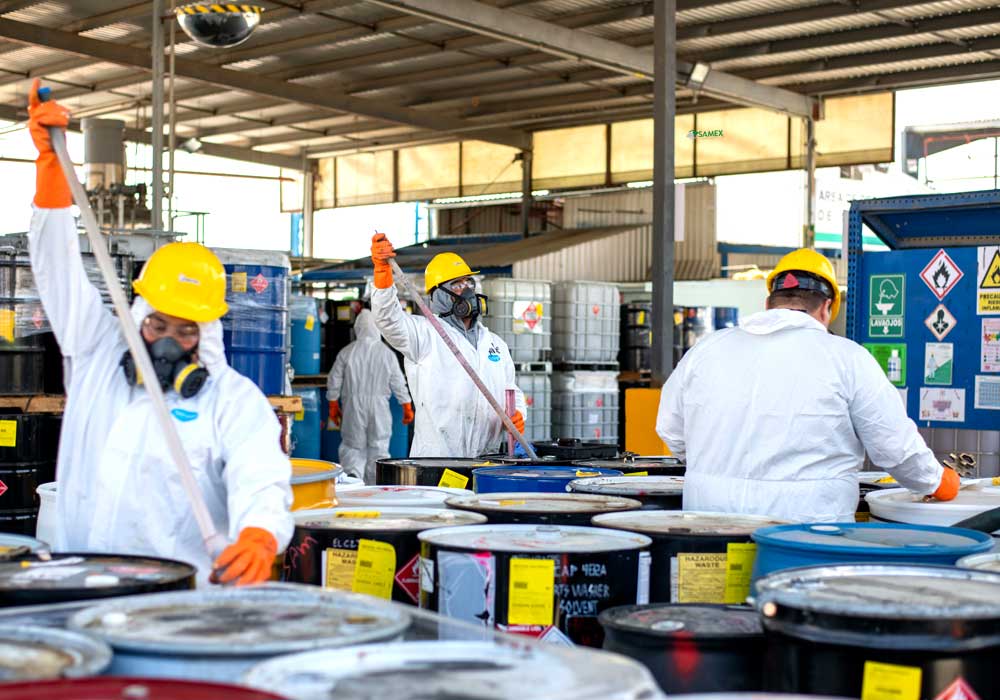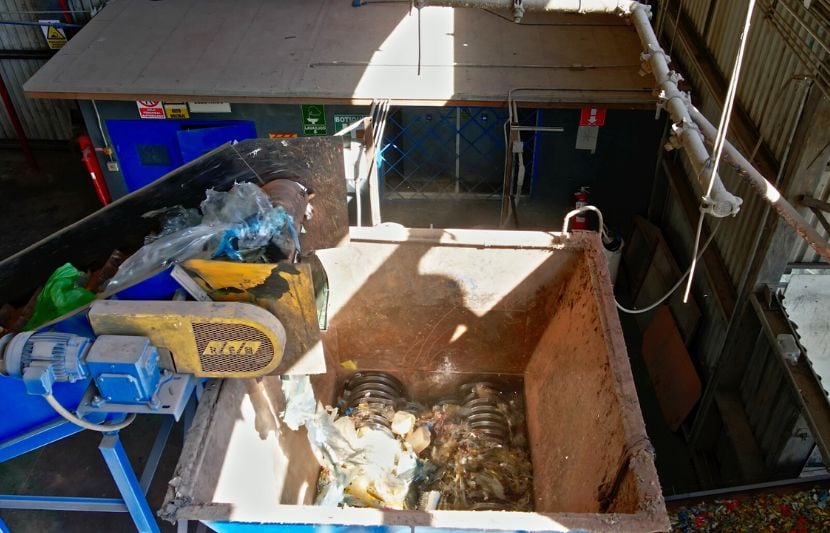Class 4.1 Flammable Solids Examples and How To Dispose
Knowing whether a material belongs to Class 4.1 Flammable Solids can determine how it must be stored, handled, transported and disposed of.

Yes, exporting hazardous waste is safe as long as you work with a reputable and licensed transporter or treatment facility.
While the prospect of sending your waste across the border may raise some red flags, transporting hazardous waste to countries like Mexico is legal and safe. In fact, Samex Environmental Services has all the authorizations needed for the export of hazardous waste to Mexico, where we operate state-of-the-art recycling technologies in Tijuana.
Not only is this process strictly regulated, it offers several benefits for hazardous waste generators. Here’s what you need to know about the legalities and benefits of exporting hazardous waste.
If you’re worried about what happens to your waste once it crosses the border, you may be relieved to know that Mexico.png?width=300&height=251&name=Hazardous%20Waste%20Disposal-Lato%20(10).png) has strict environmental regulations. Treatment, Storage and Disposal Facilities (TSDF) and hazardous waste transporters must meet both U.S. and Mexico standards and are subject to regular inspections by Mexican regulatory agencies, including the equivalent to the United States EPA and OSHA.
has strict environmental regulations. Treatment, Storage and Disposal Facilities (TSDF) and hazardous waste transporters must meet both U.S. and Mexico standards and are subject to regular inspections by Mexican regulatory agencies, including the equivalent to the United States EPA and OSHA.
The U.S. Environmental Protection Agency also issues an Acknowledgement of Consent (AOC) to Samex that certifies to you, the waste generator, that the EPA has done its due diligence in confirming with the Mexican government that Samex has all necessary permits, is in good standing and is authorized to receive imported waste.
Although, at one time, anyone could travel across the border with toxic substances, both the United States and Mexico have required inspections at the border to prevent hazardous waste from being illegally transported into Mexico for dumping since 1992.
The generator of the hazardous waste (your company) assumes liability of your waste until it crosses the Mexican border. This is known as “cradle to grave,” which means under U.S. law, you are responsible for the waste you generate from its creation until its final disposal.
Once your waste arrives at the border, Samex assumes liability at that point. Here’s a step-by-step look at how our export process works:
If it was not legal for Samex to export hazardous waste shipments, the EPA would not grant authorization for the transfer to take place.
In today’s industry, companies are looking for tools that help them embrace sustainable practices while managing their hazardous waste. Through recycling, you can help preserve the natural resources of the planet.
hazardous waste. Through recycling, you can help preserve the natural resources of the planet.
At our Samex facility in Mexico, your waste is processed and transported to the appropriate section of the facility where it is recycled.
At our waste to energy plant, we have the capacity to prepare up to more than 40 tons of alternative fuels per day by recycling hazardous solid waste. Waste materials that can be converted into alternative fuels include items contaminated with paints, solvents, resins, oils and grease, including:
Creating alternative fuel reduces the consumption of fossil fuels, reduces combustion and emission of pollutants, and reduces the amount of solids sent to landfills.
At our solvent distillation plant, solvents are purified through a distillation process to separate contaminants, allowing the solvents to be recycled and reused. Solvent distillation is a four-step process that includes:
Solvent distillation reduces the need for virgin solvent production, minimizes hazardous waste generation and conserves valuable resources by recovering and reusing solvents.
At our waste water treatment plant, our circular system includes treating acid water, alkaline water, water with hydrocarbons, and water contaminated with heavy metals. After going through various treatment processes, commercially clean, nonhazardous water is repurposed to brick manufacturing. There is no discharge to the sewer system, and any solids recovered in the filter press are directed to the waste to energy section of the plant.
At Samex, everything is used. Nothing is wasted.
Exporting your hazardous waste can offer several significant benefits, from cost savings to access to specialized treatment facilities. Here’s an overview of the benefits you can take advantage of by exporting your hazardous waste through a reputable company.
Especially if your business is located in the Southwest U.S., transporting your waste to other parts of the country can increase your carbon footprint because of the extensive transportation required. Tijuana is located just across the U.S.-Mexico border. This short trek reduces the amount of resources needed to transport your waste.
As we mentioned above, at Samex, nothing is wasted. All waste has value. Not only can you reduce your carbon footprint, but you can ensure that the waste you generate does not go to a landfill.
Because Samex uses energy-efficient technology at our waste to energy and solvent distillation plants, you can rest assured that this process is even more sustainable and minimizes environmental impact.
If you’re a generator in the Western United States, especially in the Southwest, transporting your waste streams to Samex may be your most cost-effective option. Certain waste streams that include flammable solvents, ketones, paint-related materials and flammable liquids require special processing. Shipping these waste streams that are highly regulated may be cost-prohibitive.
In the United States, you are responsible for your hazardous waste streams, even after they leave your facility. That means you’re responsible for the waste until it is disposed of or recycled at a TSDF.
When transporting hazardous waste to Mexico, your liability for your waste ends at the U.S. border. From there, Samex becomes the principal party for that waste.
While you may still be nervous about exporting the hazardous waste your facility generates, if you work with a reputable TSDF, you can ensure safe, legal and efficient disposal of your waste.
One of the key factors to look for when selecting a plant to manage your facility’s waste is the level of transparency involved.
Look for a plant that routinely returns your manifest within 30 days of receiving the hazardous waste. They should have systems in place to route your waste quickly and process it within one week of receiving it.
During that time, the waste should be analyzed to confirm conformance to the profile and routed to the appropriate processing area. After a few days, engineered fuel should be on the road to the cement kiln, and the solvents for distillation should be processed and in inventory, ready to go back into industry.
In the end, the quality of the company you work with to help you manage your hazardous waste is of the highest importance. Geographical location matters, but more so when it comes to considering how you can choose the most sustainable option for your company. Exporting hazardous waste is safe as long as you work with reputable, licensed transporters and treatment facilities that comply with all regulatory requirements on both sides of the border.

Knowing whether a material belongs to Class 4.1 Flammable Solids can determine how it must be stored, handled, transported and disposed of.
.png)
Dealing with flammable liquids requires more than just caution. It demands a proactive approach to safety.
.png)
Class 1 flammable liquids are extensively used in various industrial applications, yet their usage carries inherent dangers that require special...